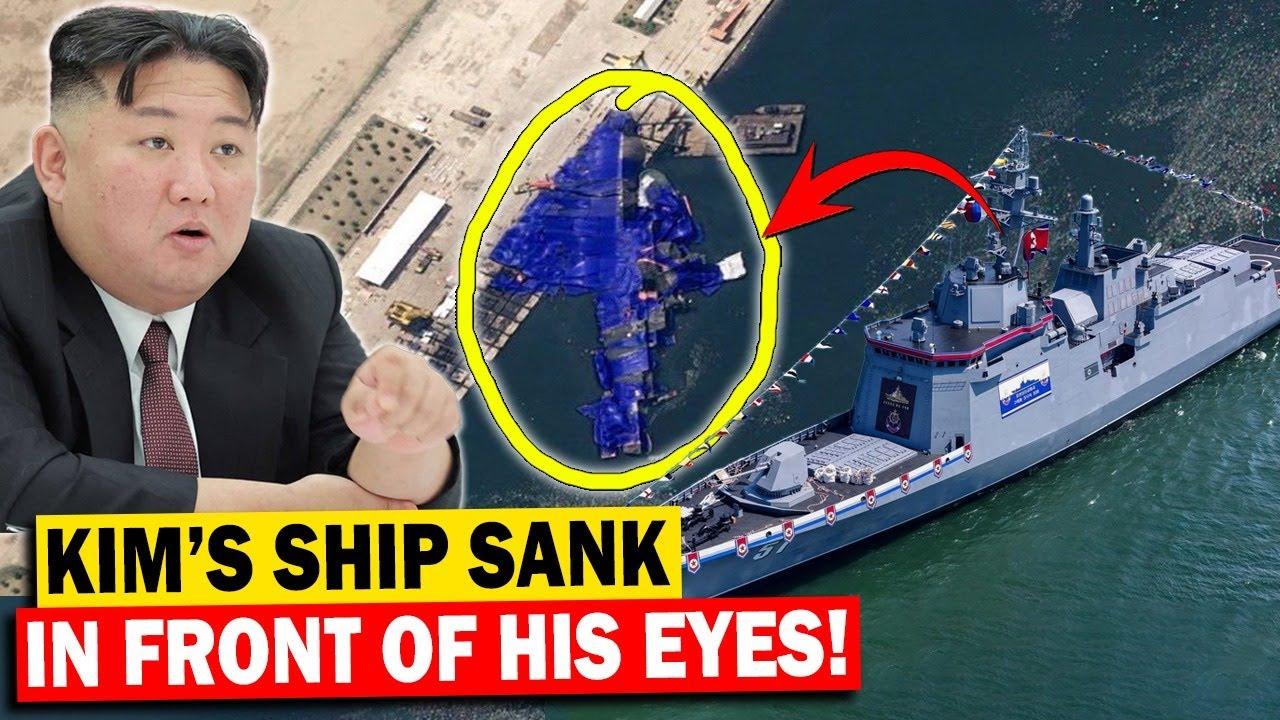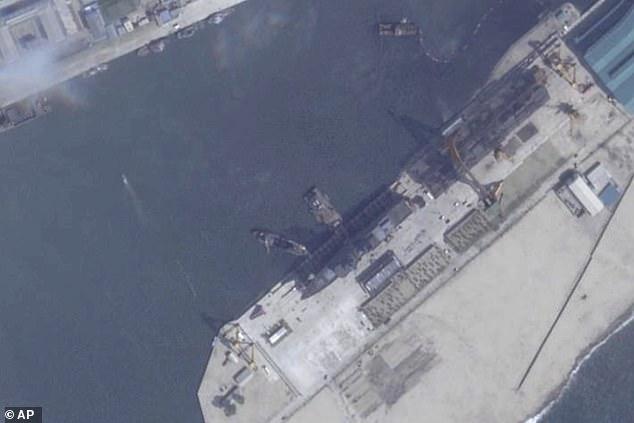In the shadowy realm of maritime military developments, North Korea has once again defied expectations by resurrecting a seemingly doomed naval vessel. What began as a potential maritime disaster has transformed into a testament to the hermit kingdom’s resilience and engineering prowess. The unexpected resurrection of a destroyer that appeared destined for the seafloor has left naval analysts worldwide scratching their heads, pondering the technical wizardry behind this improbable maritime revival. In a remarkable display of maritime resilience, the Democratic People’s Republic of Korea has successfully righted a naval vessel that previously sparked international intrigue when it dramatically capsized during its initial launch sequence.Maritime experts worldwide have expressed genuine astonishment at the sophisticated recovery operation, which defied conventional expectations of naval engineering capabilities.
Satellite imagery and strategic defense monitoring systems first captured the unexpected incident, revealing the vessel’s precarious position after its initial maritime debut went dramatically awry. The destroyer, believed to be part of North Korea’s ongoing naval modernization efforts, presented a complex salvage challenge that many experts initially deemed unfeasible.
Specialized naval recovery teams employed advanced lifting techniques and precision maritime engineering to gradually stabilize and reposition the vessel. The operation demonstrated a level of technical proficiency that challenged prevailing international perceptions about North Korean naval capabilities.
Military analysts have noted the strategic implications of this triumphant refloating, suggesting it represents more than a mere technical achievement. The incident potentially signals North Korea’s growing sophistication in naval construction and emergency maritime operations, offering subtle hints about the regime’s technological growth trajectory.Precision underwater lifting mechanisms, carefully coordinated crane operations, and meticulous weight distribution strategies were reportedly utilized during the complex recovery process. Observers noted the remarkable efficiency with which the teams managed to right the substantially sized destroyer without causing extensive additional structural damage.
The incident has prompted renewed discussions within international defense circles about North Korea’s naval research and development programs. Speculation continues regarding the specific design characteristics and intended operational parameters of the recovered vessel.
Intelligence sources suggest the destroyer represents a meaningful investment in naval infrastructure for the isolated nation, underscoring its continued commitment to maritime military capabilities despite significant economic constraints. The successful refloating operation potentially signals enhanced technical competencies within their naval engineering sectors.
Naval engineering professionals from various global institutions have expressed professional curiosity about the specific methodologies employed during the recovery operation. The case presents an unusual scenario that challenges conventional maritime salvage protocols and expectations.
While extensive details remain limited due to the secretive nature of North Korean military operations, the incident provides a rare glimpse into the nation’s evolving naval technological landscape. The successful retrieval of the capsized destroyer demonstrates an unexpected level of maritime operational flexibility and technical expertise.



